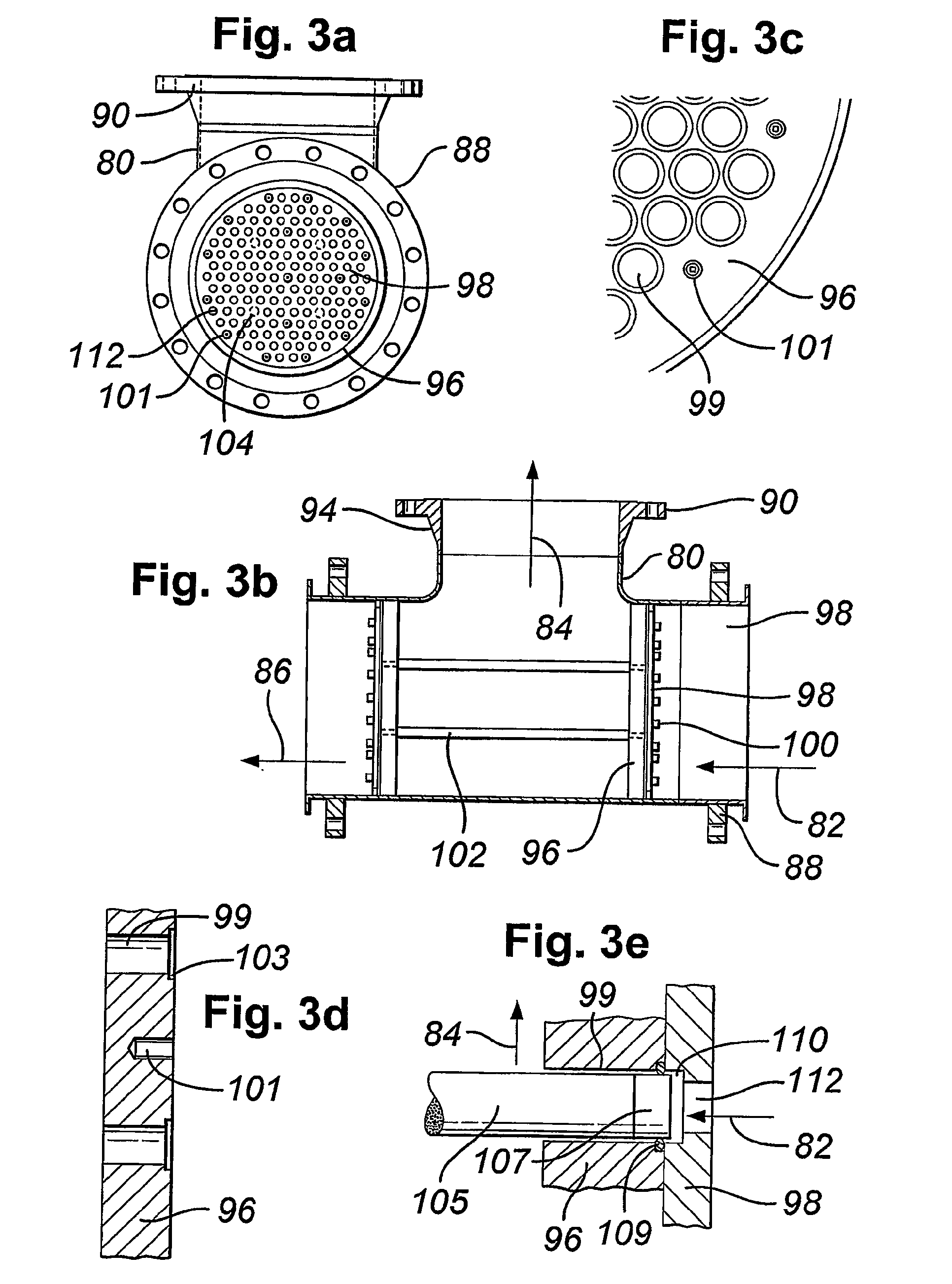Process and apparatus for treatment of organic solvents
a technology for organic solvents and processing equipment, applied in separation processes, dissolving, filtration separation, etc., can solve the problems of small value for many purposes, failure to provide a substantial defect-free membrane on a larger scale, etc., and achieve the effect of reducing the tendency to leakage and facilitating the formation of effective seals
- Summary
- Abstract
- Description
- Claims
- Application Information
AI Technical Summary
Benefits of technology
Problems solved by technology
Method used
Image
Examples
Embodiment Construction
[0039]In an embodiment, membranes are formed by a continuous zeolite film supported on a porous alumina substrate e.g. using any of the above mentioned processes. Being totally zeolitic the membrane exhibits excellent solvent resistance. Solutions can be dried and concentrated down from any water level to below 0.1% water and azeotropes are easily broken. High temperature resistance of this membrane enables application at higher temperatures yielding higher permeate fluxes and reduced membrane area or shorter drying times. Due to the high membrane selectivity the permeate produced consists of high purity water which can be recycled or discharged without further treatment.
[0040]The present membranes are useful inter alia for membrane pervaporation systems for drying bio-ethanol to produce the new greener fuel-bio-ethanol. The advantages of this fuel have already been widely recognised due to its many attributes and positive impacts on air quality by:[0041]Cleaner combustion[0042]Redu...
PUM
| Property | Measurement | Unit |
|---|---|---|
| velocity | aaaaa | aaaaa |
| internal diameter | aaaaa | aaaaa |
| Reynolds number | aaaaa | aaaaa |
Abstract
Description
Claims
Application Information
 Login to View More
Login to View More - R&D
- Intellectual Property
- Life Sciences
- Materials
- Tech Scout
- Unparalleled Data Quality
- Higher Quality Content
- 60% Fewer Hallucinations
Browse by: Latest US Patents, China's latest patents, Technical Efficacy Thesaurus, Application Domain, Technology Topic, Popular Technical Reports.
© 2025 PatSnap. All rights reserved.Legal|Privacy policy|Modern Slavery Act Transparency Statement|Sitemap|About US| Contact US: help@patsnap.com



